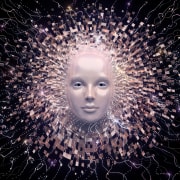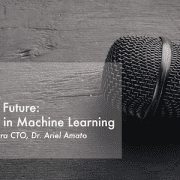Artificial Intelligence 7.20.2018
The Best Things we read in AI this Week
“Artificial Intelligence” is Vintra’s weekly round-up of AI-related articles, blogs, videos, and papers we liked.

- A very thoughtful and thought-provoking look at inclusion in the age of AI by Tim Dutton. Read the article here.
From this perspective, what inclusion will be in the age of AI is the same as it is today and the same as it was in the past: the ability to imagine and achieve a good life in every area that is meaningful. However, how inclusive the age of AI will be is still up to debate. And, this is the key point, how inclusive the future will be does not depend on the state of AI’s sophistication, but on the policies, regulations, and norms that govern the use and development of AI.
Check our latest Case Study, The Running Man.
{{cta(‘c9b7d98e-3cdf-4920-a3cb-44549cbb5b78’)}}
- How the data and surveillance boom is transforming law enforcement and justice. Read the article here.
Now the relationship between information and crime has changed in two ways, one absolute, one relative. In absolute terms, people generate more searchable information than they used to. Smartphones passively track and record where people go, who they talk to and for how long; their apps reveal subtler personal information, such as their political views, what they like to read and watch and how they spend their money. As more appliances and accoutrements become networked, so the amount of information people inadvertently create will continue to grow.
- Deep learning explained, with pictures of cats and dogs even. Read the article here.
Deep Learning is what I consider to be the “fanciest” of the different types of machine learning because it relies on neural nets, just like the human brain. Don’t be scared by that term — to understand a neural net just think of layers of functions built upon each other. // For example, imagine a scenario from daily life: you see an object, identify that it’s round, identify that it’s orange, and then identify that it’s a fruit, and therefore an orange. Each of those conclusions required a certain kind of function that recognizes a piece of the overall object and that feed off of the result of other functions.
- A guide to preparing your business for the AI revolution. Read the article here.
Artificial intelligence can be used to solve problems across the board. AI can help businesses increase sales, detect fraud, improve customer experience, automate work processes and provide predictive analysis. // Industries like health care, automotive, financial services and logistics have a lot to gain from AI implementations. Artificial intelligence can help health care service providers with better tools for early diagnostics. The autonomous cars are a direct result of improvements in AI.
- Watermarks no more! And the many ways this incredible tech can be used to clean up and fix corrput or bad images. Read the article here.
What makes this system so unique is that it can teach itself to fix corrupted photos simply by looking at them. Previous deep learning work in image retouching was centered on training neural networks to restore images by comparing noisy and clear images. // This new method, however, only requires two corrupted images to proceed with removing noise. “It is possible to learn to restore signals without ever observing clean ones, at performance sometimes exceeding training using clean exemplars,” reads the paper.
- Capture the flag like you’ve never seen it before… Read the article and watch the videos here.
The [AI] agents are never told anything about the rules of the game, yet learn about fundamental game concepts and effectively develop an intuition for CTF. In fact, we can find particular neurons that code directly for some of the most important game states, such as a neuron that activates when the agent’s flag is taken, or a neuron that activates when an agent’s teammate is holding a flag.
Subscribe to our blog to stay up to date!









Leave a Reply
Want to join the discussion?Feel free to contribute!